This post may contains affiliate links. Read our full disclosure here.
Small Space Solutions: Maximizing Style in Apartments and Tiny Homes
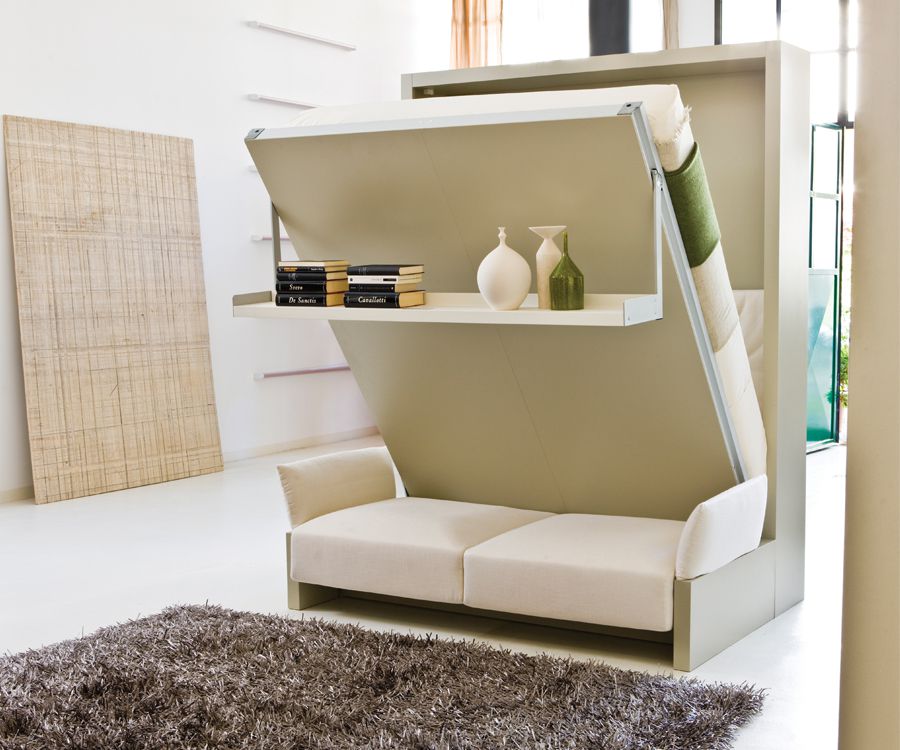
Multifunctional furniture like this murphy bed that doubles as a sofa is essential for small spaces. Image: The Spruce
Why Small Space Living Is Trending in 2025
Living in compact quarters is no longer just a necessity—it’s become a conscious lifestyle choice for many. Whether you’re in a cozy urban apartment or a trendy tiny home, making the most of limited square footage requires both creativity and strategic planning. The good news? Small spaces can be just as stylish, comfortable, and functional as their larger counterparts when designed thoughtfully.
In this comprehensive guide, we’ll explore innovative solutions for maximizing every inch of your small living space without compromising on style or comfort. From clever storage ideas to multi-purpose furniture and visual tricks that create the illusion of spaciousness, you’ll discover actionable tips to transform your compact home into an efficient, beautiful sanctuary.
“The challenge of a small space isn’t fitting everything you own into it—it’s creating a space that contains everything you need while still feeling open and inviting.”
— Interior Designer Lisa Holt
Strategic Planning: The Foundation of Small Space Design
Before purchasing a single piece of furniture or accessory, take time to assess your space and develop a cohesive plan. This foundational step will save you from costly mistakes and ensure your small home functions optimally.
Start With a Thoughtful Layout
The layout is arguably the most critical element of small space design. Consider traffic flow, natural light sources, and how you actually use each area of your home. Create zones for different activities—sleeping, working, dining, relaxing—even if they share the same physical space.
Pro Tip: Room Zoning
Use area rugs, different lighting schemes, or subtle changes in wall treatment to visually separate areas without physical barriers. This creates the feeling of distinct “rooms” within an open plan.
For studio apartments, consider using room dividers that don’t block light—like open shelving, hanging plants, or fabric panels—to create privacy without making the space feel closed off.
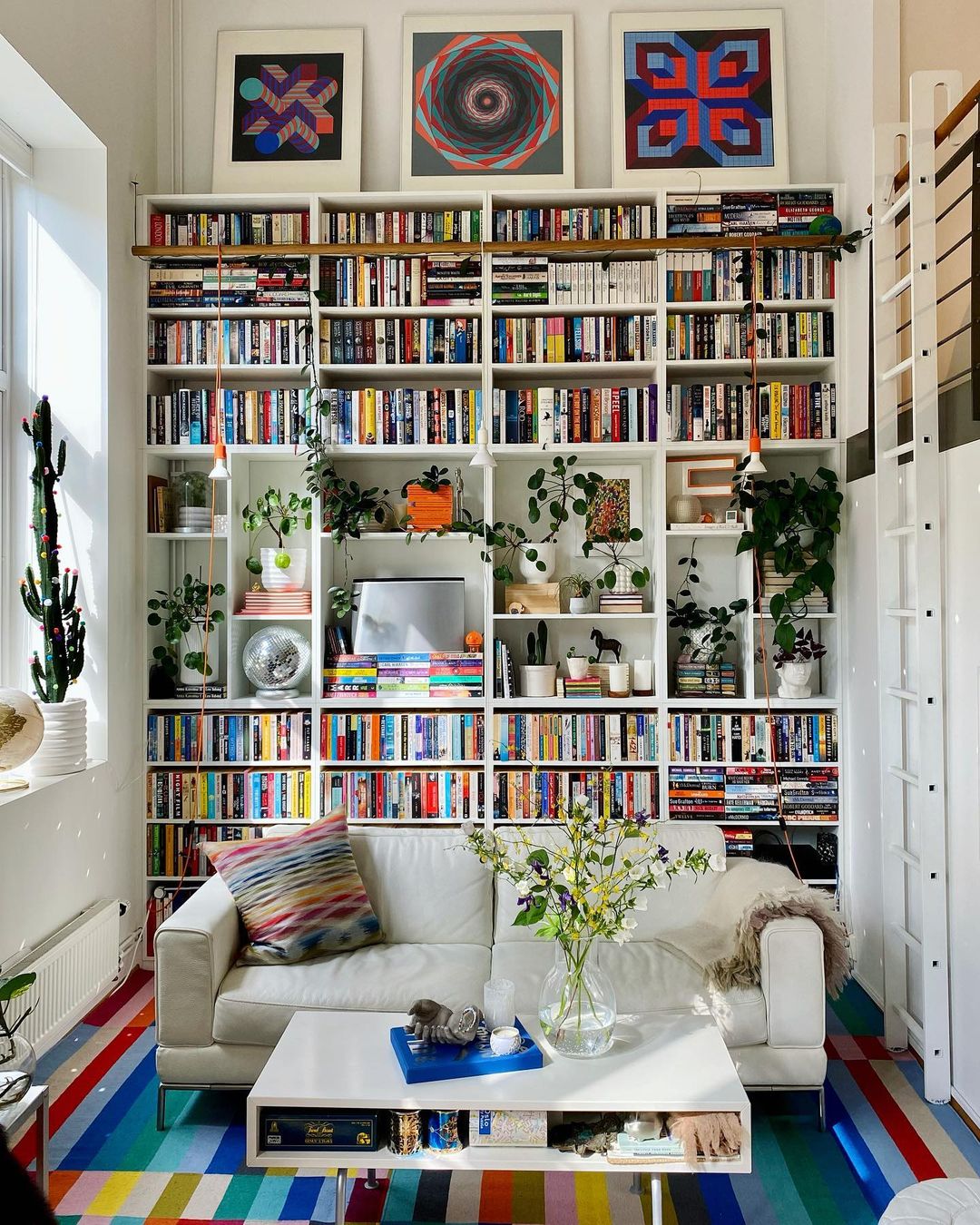
Prioritize Your Needs
In small spaces, every item must earn its keep. Make a list of your non-negotiables—the things you absolutely need for your lifestyle—and build your design plan around accommodating these essentials first.
Ask yourself important questions:
- Do you work from home and need a dedicated workspace?
- Do you entertain frequently and require flexible seating?
- Are there hobbies that require special equipment or storage?
- How much clothing storage do you realistically need?
Being honest about your lifestyle needs will help you allocate your limited space more effectively.
Multi-Functional Furniture: The Small Space Superheroes
When square footage is at a premium, furniture that serves multiple purposes isn’t just convenient—it’s essential. Investing in well-designed, multi-functional pieces can effectively double your usable space.
Learn expert tips for making small spaces feel bigger and more functional.
Transforming Furniture Essentials
Here are some space-saving furniture heroes worth considering:
- Murphy beds: These fold-up beds can transform a bedroom into a living room, office, or exercise space during the day.
- Extendable dining tables: Choose tables that can expand when you have guests but remain compact for daily use.
- Nesting tables: These provide flexible surface space that can be separated when needed or tucked away when not in use.
- Storage ottomans: They function as seating, footrests, coffee tables, and hidden storage compartments.
- Sofa beds or futons: Essential for accommodating overnight guests without dedicating permanent space to a guest bed.

Custom and Built-In Solutions
While they require a bigger initial investment, built-in furniture and custom solutions often provide the most efficient use of space in the long run. Consider:
- Built-in banquette seating with storage underneath
- Custom shelving units that maximize unusual wall spaces
- Platform beds with integrated drawers
- Wall-mounted desks that fold away when not in use
For Renters
If you can’t make permanent changes, look for modular furniture systems that can achieve similar functionality without requiring installation. Companies like IKEA have extensive options specifically designed for small, temporary spaces.
Maximize Vertical Space: Think Up, Not Out
One of the most overlooked resources in small homes is vertical space. While your floor area may be limited, your walls offer abundant opportunities for storage, display, and even functionality.
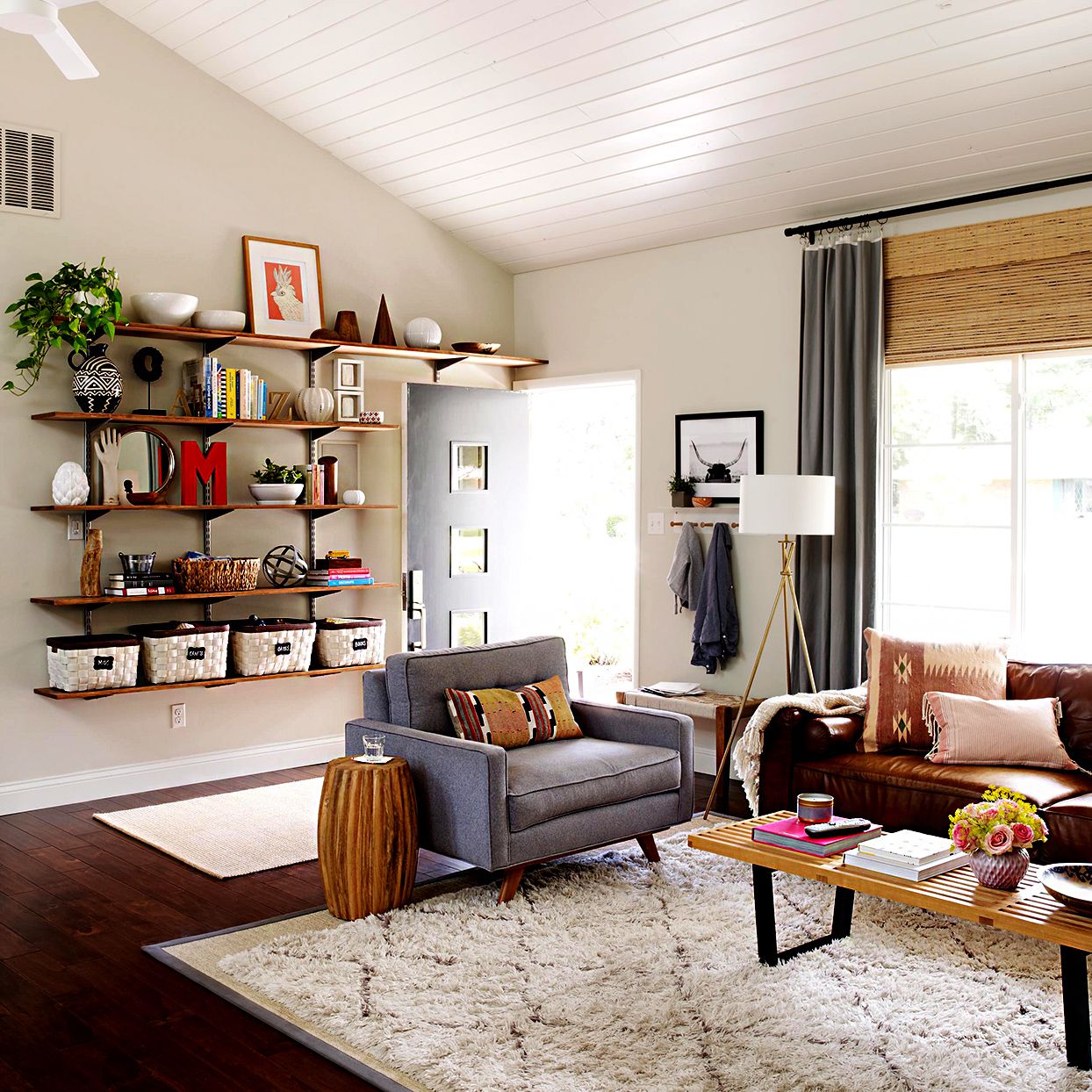
Smart Vertical Storage Solutions
Here are effective ways to utilize your vertical space:
- Floor-to-ceiling bookshelves: Use these not just for books but also for baskets that conceal smaller items.
- Wall-mounted cabinets: Install these above sofas, beds, or toilets for storage that doesn’t consume floor space.
- Over-door organizers: Perfect for bathrooms, bedrooms, and pantries to store smaller items.
- Pegboards: Highly versatile, they can be used in offices, kitchens, or craft areas.
- Floating shelves: Ideal for displaying decorative items while providing functional storage.
- Ceiling-mounted racks: Consider these for kitchens (pot racks) or even for storing seasonal items in less-used spaces.
Discover renter-friendly storage solutions that won’t damage walls.
Don’t Forget About Doors
The backs of doors provide valuable real estate in small homes:
- Add hooks for hanging robes, bags, or accessories
- Install narrow shelving for spices or toiletries
- Use shoe organizers for storing not just shoes, but also cleaning supplies, accessories, or craft materials
Create Visual Spaciousness with Strategic Design
How a space feels is often just as important as its actual dimensions. With strategic design choices, you can create the perception of more space even when working with limited square footage.
Color and Light: Your Most Powerful Tools
The right color palette and lighting strategy can dramatically transform how spacious a room feels:
- Light colors: Whites, creams, and soft pastels reflect light and make walls appear to recede, creating an airy feel. Consider painting your ceiling a slightly lighter shade than your walls to give the illusion of height.
- Monochromatic schemes: Using different shades of the same color creates a seamless look that expands the perceived size of a room.
- Strategic accent colors: Use bolder colors sparingly as accents rather than on large surfaces.
- Layered lighting: Combine ambient, task, and accent lighting to create depth and eliminate dark corners that can make spaces feel smaller.
“In small spaces, light is your greatest ally. Maximize natural light wherever possible, and supplement with strategic artificial lighting to create a space that feels open and inviting regardless of its actual size.”

Visual Tricks That Create Spaciousness
These design strategies can make your small space appear larger:
- Mirrors: Strategically placed mirrors reflect light and create the illusion of more space. Consider a large mirror across from a window or a mirrored furniture piece.
- Glass and transparent materials: Glass coffee tables, lucite chairs, or glass room dividers maintain sight lines and prevent visual obstruction.
- Consistent flooring: Using the same flooring throughout creates a continuous visual flow that makes spaces feel larger.
- Raised furniture: Pieces with exposed legs allow you to see underneath, creating a sense of spaciousness.
- Appropriately scaled furniture: Avoid oversized pieces that overwhelm the room. Furniture with slim profiles works best in small spaces.
Smart Storage Solutions That Declutter Your Space
Clutter is the enemy of small spaces. Effective storage solutions help maintain a clean, organized environment that feels calm and spacious.
Hidden Storage Opportunities
Look for unexpected storage opportunities throughout your home:
- Under-bed storage: Utilize this space with drawers, bins, or vacuum bags for seasonal items.
- Dual-purpose furniture: Choose coffee tables, ottomans, and benches with hidden storage compartments.
- Between-stud recessed shelving: In bathrooms or hallways, consider recessing shelves between wall studs for storage that doesn’t protrude into the room.
- Toe-kick drawers: The space under kitchen cabinets can be converted into slim drawers for baking sheets or seldom-used items.
- Over-appliance shelving: Install shelving above toilets, washers/dryers, or refrigerators to use otherwise wasted vertical space.
Decluttering Tip
Follow the “one in, one out” rule: For every new item you bring into your home, remove something else. This helps maintain control over accumulation in limited spaces.
Organization Systems That Work
Even the best storage solutions fail if they’re not organized effectively:
- Drawer dividers: Keep drawers tidy and maximize their capacity with customizable dividers.
- Labeled containers: Use uniform containers with clear labels for a cohesive look and easy retrieval.
- Hooks and racks: Install these wherever appropriate to keep frequently used items accessible but off counters and tables.
- Door-mounted systems: Utilize the back of cabinet doors for additional organization opportunities.
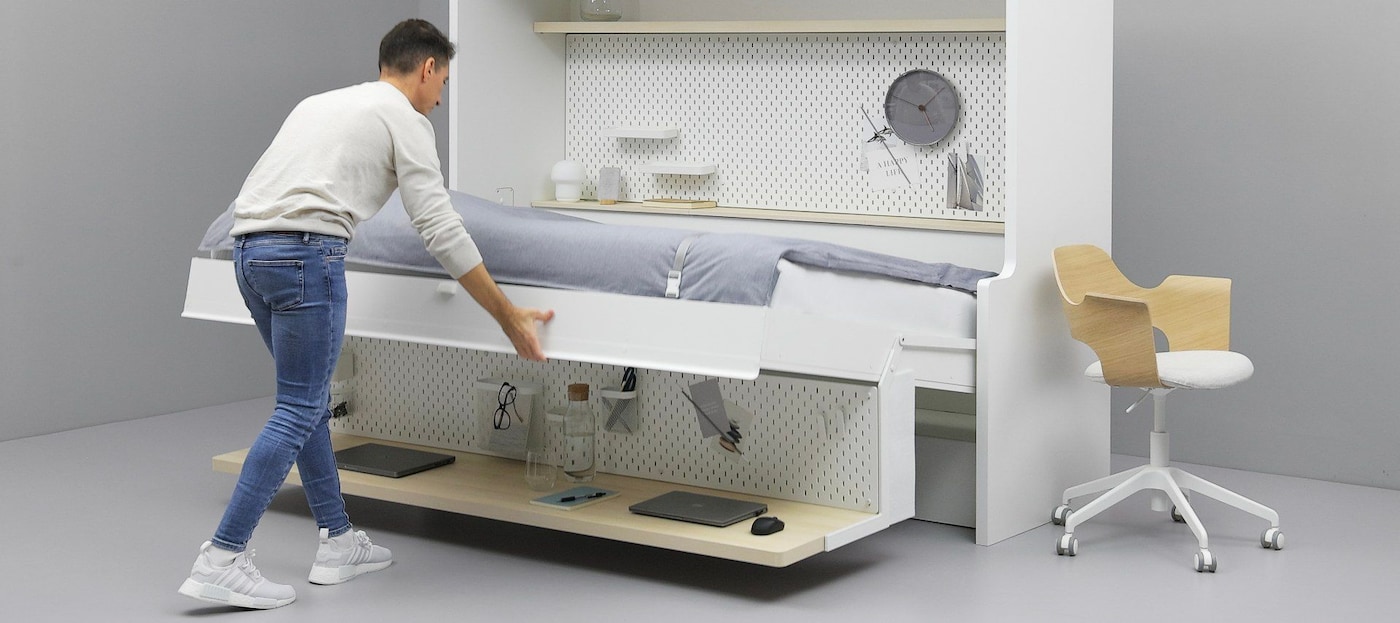
Small Space Styling: Adding Personality Without Clutter
A common misconception is that small spaces can’t be richly decorated. On the contrary, thoughtful styling is what transforms a tiny space from merely functional to truly personal and inviting.
Curated Decoration Principles
When decorating small spaces:
- Quality over quantity: Select fewer, more meaningful pieces rather than many small items that create visual noise.
- Scale appropriately: One large art piece often works better than several small ones, which can create a cluttered look.
- Create focal points: Direct attention to special features or areas to give the eye restful places to land.
- Incorporate texture: Add visual interest through varying textures rather than numerous objects or patterns.
- Consider circulation: Leave breathing room around furniture and decorative elements.
Bringing Nature Indoors
Plants are particularly valuable in small spaces:
- They improve air quality, which is especially important in smaller environments
- They add life, color, and texture without creating clutter
- Vertical plant walls or hanging planters utilize space efficiently
- Strategically placed plants can soften corners or act as natural room dividers
Discover 15 expert tips for maximizing small apartments and bedrooms.
Budget-Friendly Small Space Solutions
Creating a functional and stylish small space doesn’t have to break the bank. Here are cost-effective approaches to maximize your compact home:
DIY Space-Saving Projects
Consider these affordable DIY projects:
- Floating shelves: Simple to build and highly customizable for any space.
- Under-shelf baskets: Attach wire baskets under existing shelves to double their storage capacity.
- Magnetic strips: Install these in kitchens or craft areas to keep metal tools accessible without using drawer space.
- Tension rod dividers: Use these inside cabinets to organize cutting boards, baking sheets, or even handbags.
- Repurposed furniture: Transform vintage suitcases into storage tables or ladder bookshelves into bathroom organizers.
Strategic Secondhand Shopping
Thrift stores, estate sales, and online marketplaces can be goldmines for small space furnishings:
- Look for solid wood pieces that can be refinished and repurposed
- Seek out vintage items with built-in storage like secretaries or chests
- Keep measurements of all available spaces on your phone for reference while shopping
- Consider unusual items that could serve multiple functions with minor modifications
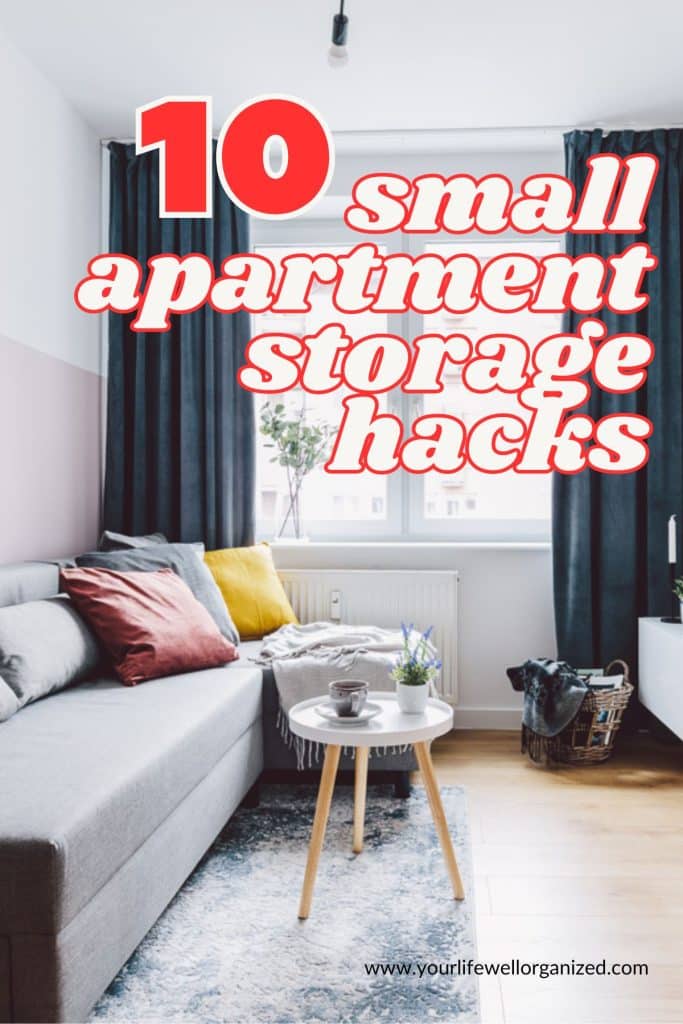
Room-by-Room Small Space Solutions
Kitchen Maximizers
Small kitchens require particular attention to organization and efficiency:
- Magnetic knife strips: Free up drawer space and keep knives accessible.
- Pegboard walls: Create customizable storage for pots, utensils, and small appliances.
- Cabinet door organizers: Utilize the inside of cabinet doors for spices, cutting boards, or cleaning supplies.
- Multi-level shelving: Add shelf risers inside cabinets to double their capacity.
- Slim rolling carts: These can fit in narrow spaces between appliances or cabinets, providing valuable additional storage.
Bathroom Space-Savers
Even the tiniest bathrooms can be both functional and stylish:
- Over-the-toilet shelving: This commonly underutilized space is perfect for additional storage.
- Shower caddies: Choose ones that hang from the showerhead to avoid taking up precious shower shelf space.
- Magnetic strips: Attach small metal containers to these for bobby pins, tweezers, and other small items.
- Towel hooks instead of bars: Multiple hooks take up less wall space than traditional towel bars.
- Medicine cabinet upgrades: Replace standard medicine cabinets with deeper, more functional versions.
Bedroom Optimization
Create a restful bedroom even in limited space:
- Headboards with storage: Choose beds with built-in drawers or shelving in the headboard.
- Wall-mounted nightstands: These provide the function without the footprint of traditional bedside tables.
- Clothing rotation: Store off-season clothing in vacuum bags under the bed or in high closet shelves.
- Door-mounted jewelry organizers: Keep accessories organized without taking up drawer space.
- Multi-rod closet systems: Double or even triple your hanging capacity with tiered closet rods.
Living Successfully in Small Spaces: Mental Approach
Beyond physical organization, successful small space living requires a particular mindset:
The Minimalist Mentality
Adopting these principles can transform your relationship with your space:
- Regular purging: Schedule quarterly decluttering sessions to prevent accumulation.
- Thoughtful acquisition: Before bringing anything new home, consider not just if you like it but if it deserves the valuable space it will occupy.
- Digital alternatives: Where possible, opt for digital over physical items (e.g., e-books, digital photos, scanned documents).
- Experience over possessions: Shift your spending toward experiences rather than objects that require storage.
- One in, one out rule: For each new item that enters your home, remove something else.
“Living in a small space isn’t about learning to live with less—it’s about realizing how little you truly need to live well.”
Conclusion: Embracing the Small Space Lifestyle
Living in a small space doesn’t mean sacrificing style, comfort, or function. With thoughtful planning, strategic furniture choices, and creative organization, your compact home can become a showcase of efficient design and personal expression.
Remember that successful small space living is an ongoing process of refinement. As your needs change, be willing to reassess your space and make adjustments. The beauty of a small home is that even minor changes can have a significant impact on your daily experience.
By applying the principles and solutions outlined in this guide, you can transform space limitations from constraints into opportunities for innovative design. Your small space isn’t just a place to live—it’s a canvas for creative problem-solving and intentional living.
Share Your Small Space Solutions!
Do you have clever small space solutions that have transformed your home? Share them in the comments below—we’d love to hear your ideas and experiences!



